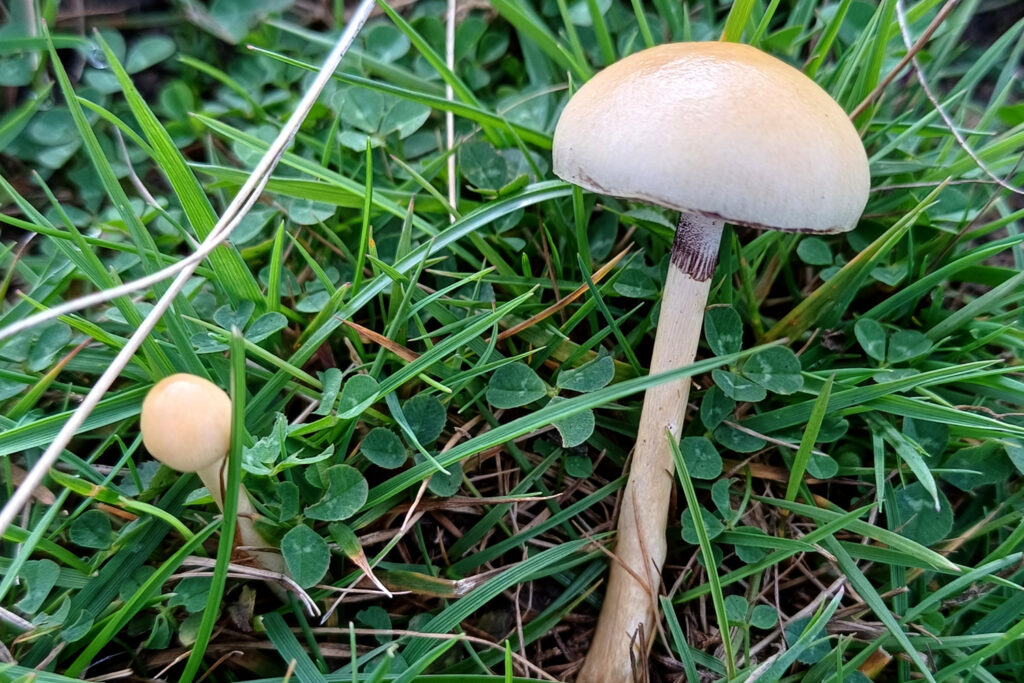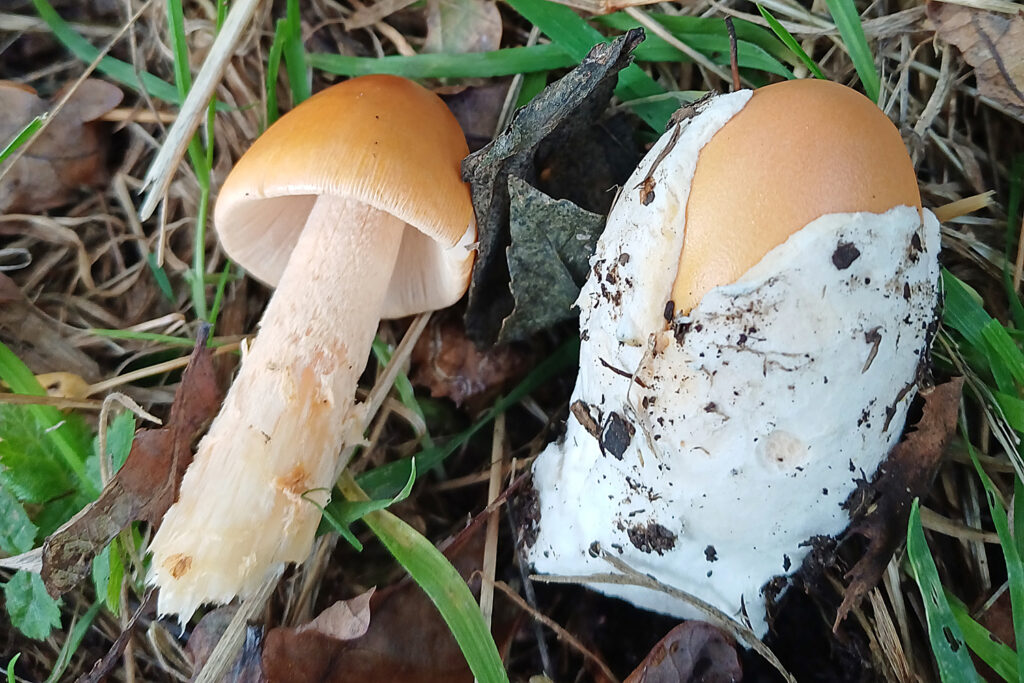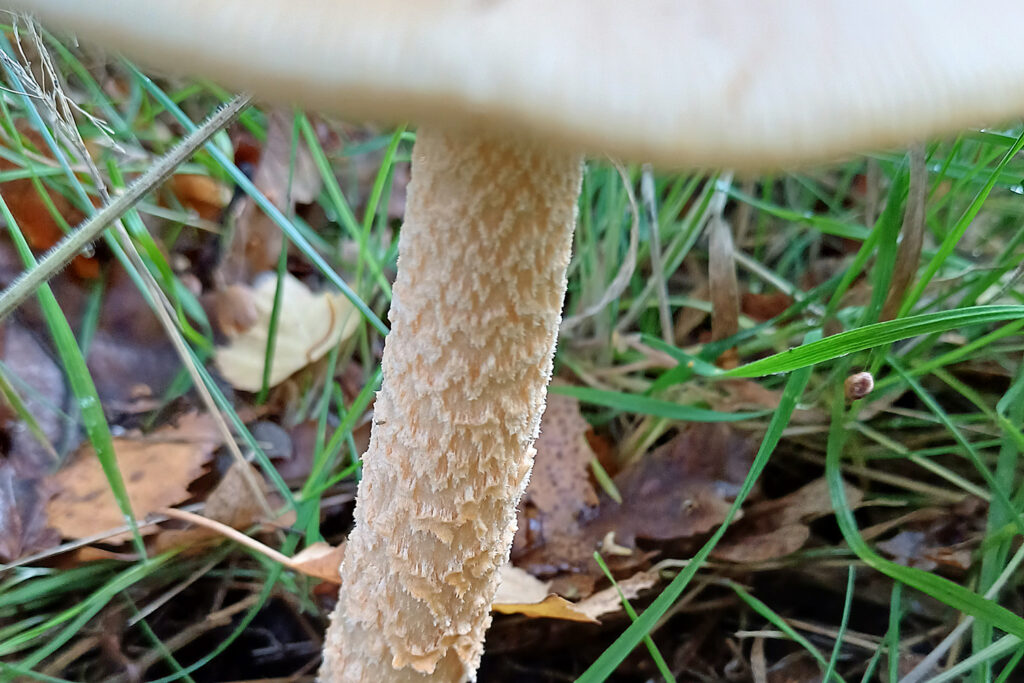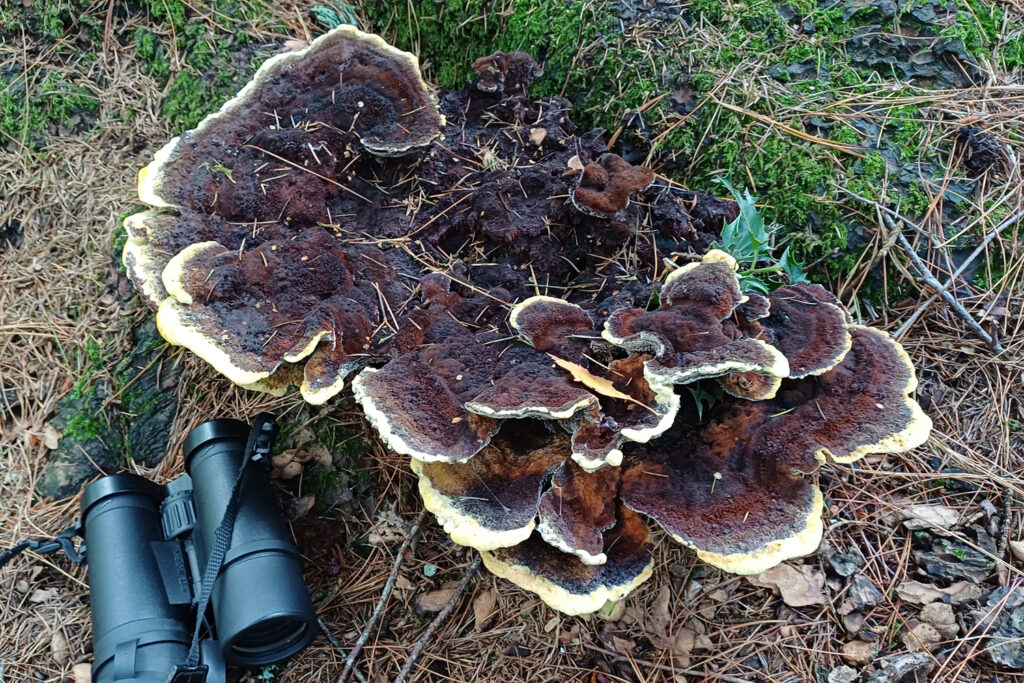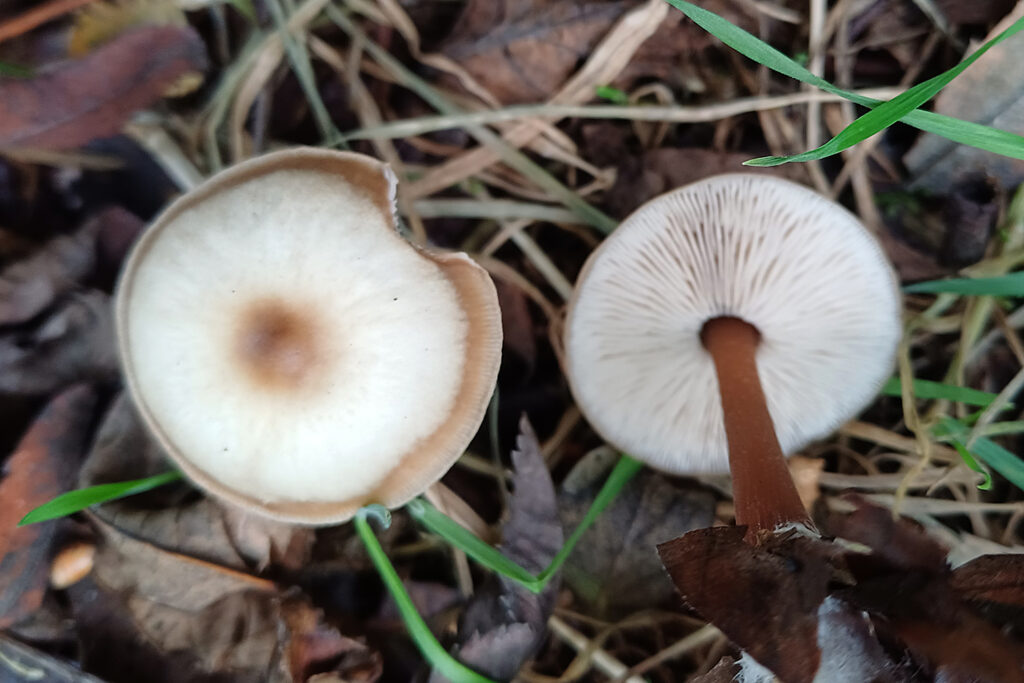Charnwood Lodge Fungi
As most of you know I volunteer at Charnwood Lodge and often spot all kinds of species but wanted to update on some of the fungi I have spotted over the last few weeks. Please note they are yet to be put on NatureSpot for further scrutiny.
The first unmissable fungi, which seems to be doing well this year, is The Parasol Mushroom Macrolepiota procera. Unlike the Shaggy Parasol Chlorophyllum rhacodes, this has a scaly zigzag pattern on its stem.

With the grazing of the Heath, there are a number of animal dung species present, of those I recorded two:
Petticoat Mottlegill Panaeolus papilionaceus – the bell shaped cap is brownish in colour and. It develops tiny white partial veil fragments (hence the petticoat) that hang like little teeth from the edge of the cap. There is no ring on the stem.
Dung Roundhead Stropharia semiglobata -a fungi that changes as it develops. The cap starts as light yellow and turns darker (you can see a new fruiting body appearing on the left in the photo) and what is left of the cap ring on the stem.
Others records included:
Tawny Grisette Amanita fulva – associated with both hard and softwood trees, this tawny orange cap has a striated (with comb-like radial ridges). The gills are white and the stem usually tapers being narrower at the top; white with zig-zag patterning in a paler shade of the cap colour. There is no ring, but at the base of the stipe there is a large white sac-like volva.
Orange Peel Fungus Aleuria aurantia – well named from its appearance this is not often recorded in Leicestershire growing on decaying wood alongside grassy banks.
Ainseed Funnel Clitocybe odora – this was forming a ‘ring’ of over 12 fruiting bodies and I could actually smell them before seeing them with its well named odour pervading on a still, sunny afternoon.
Dyers Maisegill Phaeolus schweinitzii – this at times, large bracket fungus can be identified by its yellow edge and spongy nature when new, darkening to black and brittle when older.
Porcelain Fungus Oudemansiella mucida – this fungus has fruited on the same split Sweet Chestnut tree for many years, and much that it was far from being it’s best, it is always lovely to see the clear white fungus.
The Deceiver Laccaria laccater – The orange-brown cap changes colour depending on whether it is wet or dry and is usually curved or twisted and fibrous. The stem is the same colour as the cap.
Buttercap Rhodocollybia butyracea – this fungus gets its name from the greasy feel of the cap. It has a distinct umbo (central bump). The colour varies but is generally ochraceous brown with an ivory edge. The taxon is the Collybias group and are called ‘toughshanks’ because of their fibrous and flexible stem, which has no ring or volva.
Rosy Bonnet Mycema rosea – this has a distinctive pinky-white to deep red cap and can be found most often in leaf litter under deciduous trees.
Penny Bun or Cep Boletus edulis – much that there are many varied opinions about non-taxonomic names, this like the Ainseed Funnel is very well named, giving the appearance of a baked bun. The tubes (seen when the cap is broken or sliced) are whitish to pale yellow and are easily removed from the cap.
There were many more species that each has their identification difficulties but with approximately 18,000 in the UK, I’ll keep trying.
Margaret McLoughlin

